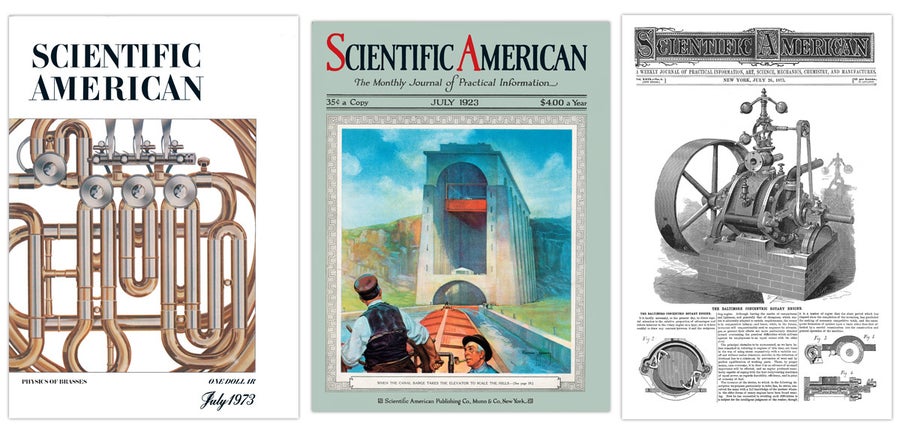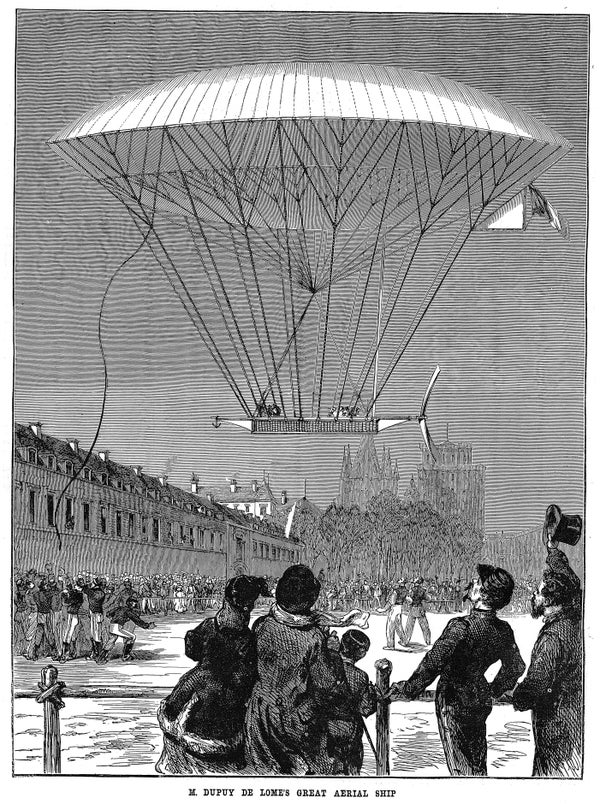1973
Crater Mystery Explained
“Why is the earth not covered with meteorite-impact craters as the moon is? Presumably, most of the craters formed in the past have been obliterated by erosion and the dynamic processes of the earth's crust. There are nonetheless at least 14 good-sized craters on the Canadian Shield, some of them dating back nearly 600 million years. According to a hypothesis put forward by Brian Dent of Stanford University, the reason these craters have survived is that they were made in ancient material that was subsequently covered by sediments, which were then planed off by glaciation in comparatively recent times to expose the craters anew.”
On supporting science journalism
If you're enjoying this article, consider supporting our award-winning journalism by subscribing. By purchasing a subscription you are helping to ensure the future of impactful stories about the discoveries and ideas shaping our world today.
1923
Mosquito Menace
“Using minnows as mosquito policemen, digging huge drainage ditches, fighting the minute parasitic pests with oil and Statewide cleanup activities, mobilizing every agency of modern science to eliminate a menace and peril which jeopardize the rapid settlement of the land of our last frontier—these are the effective measures that the Florida State Board of Health and manifold civic and private concerns are exercising most vigorously in freeing Florida of one of her most unwelcome guests, the objectionable, omnipresent mosquito, the minute musketeer of the insect world who delights in poking its prickly bayonet into human flesh. Floridans [sic] have now arisen and united resources in the most determined campaign against the pestiferous ‘bloodsuckers’ ever waged in Dixie.”
The Accidental Thermos
“Sir James Dewar, whose death was recently announced, is popularly known as the inventor of the thermos bottle. However, he was not consciously working for that, but rather for something to preserve liquid gases, with which he was experimenting. The use that his ‘Dewar tube’ is now mostly put to came as an afterthought. It is true that Dewar used his invention himself for such purposes, but had no intention of commercializing it. He was later able to liquefy hydrogen and he froze it at minus 438 degrees Fahrenheit. He also isolated hydrogen, helium and neon from the air.”
Ro: A Universal Language
“Ro is a language, but there is no Land of Ro. It is a tongue made up out of whole cloth. With a knowledge of it, the world would become one nation, for language is a barrier that begets many misunderstandings between peoples. If Ro, or any other of the several machine-made tongues, could be ‘put over’ in a day—if we could all go to bed saying ‘Good Night’ and wake up saying ‘Good Morning’ in Ro—this would soon be a better world to live in. If we could all talk something like this: ‘El ye ni cikno uq zad faz ov riceler al kiwap ov temeler ap azod ro,’ how much sweeter life would be! But folks won't. The fact is, another ‘Ro’ is being built now. The world is turning more and more to it as a language of business and commerce: English. There will be a ‘universal language,’ not so perfect, not so mathematically constructed as Ro. But it will not be Ro.”
1873
First Underground Railway Is In …
“The city of Baltimore now boasts a splendid underground railway, the first ever constructed in the U.S. Two distinct lines of tunnels have been made, at an expense of some five million dollars, whereby nearly all of the various railways now entering in the city have their tracks united. The Underground Railway consists of the Baltimore and Potomac tunnel, under some twenty-nine streets and avenues. The Union Tunnel extends under some thirteen streets and avenues.”
Bunsen's Burner
“In 1852 Robert Wilhelm Bunsen was nominated professor of chemistry in the University of Heidelberg, which position he still holds. We owe to him important contributions relative to the combustion and diffusion of gases. He is the discoverer of the galvanic battery which bears his name, and which is now most commonly in use. He is also the inventor of that wonderful instrument known as Bunsen's burner. Herr Bunsen, although now in his 62nd year, enjoys excellent health and is still unceasing in the pursuit of his investigations. His style of lecturing is very happy, and has always attracted a large audience.”
Bunsen died at the age of 88 in 1899.

